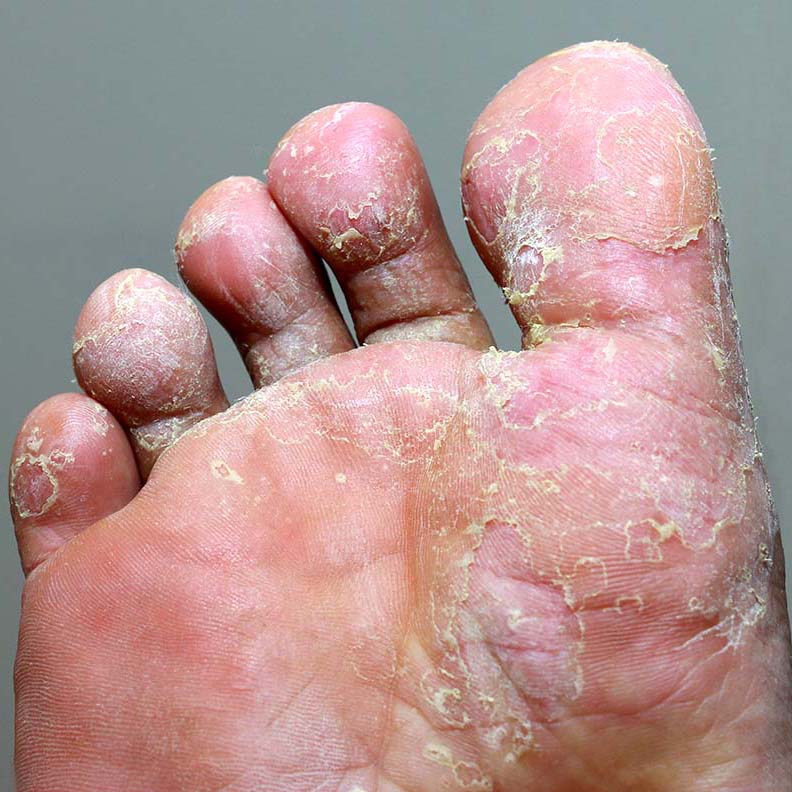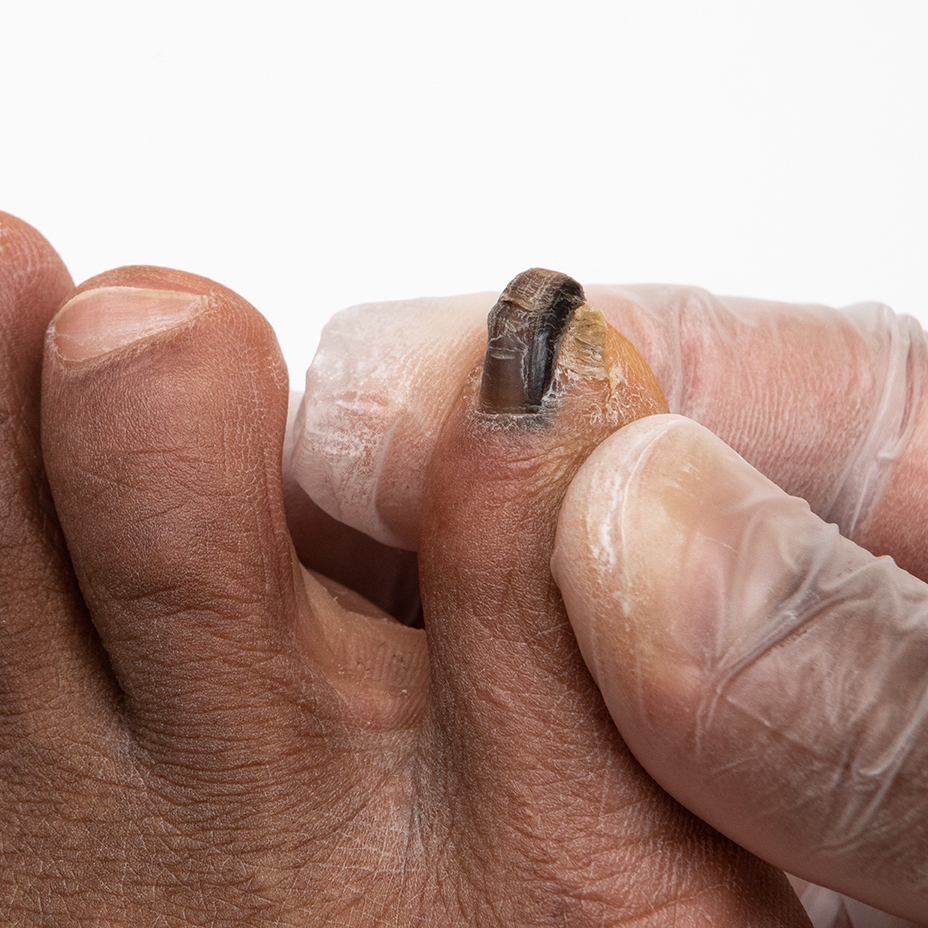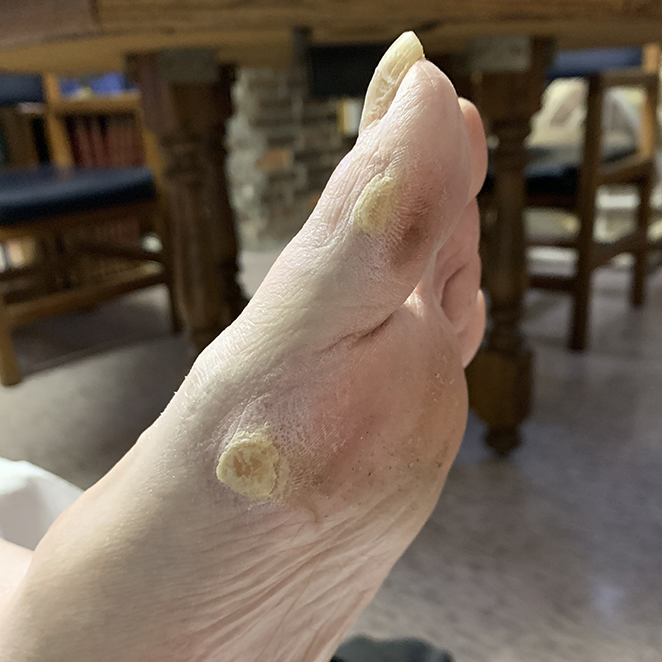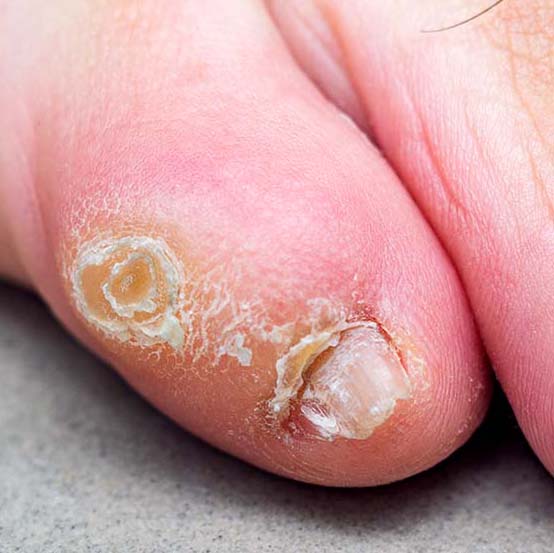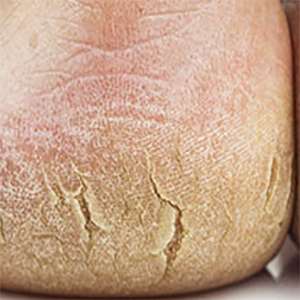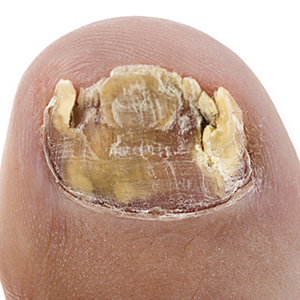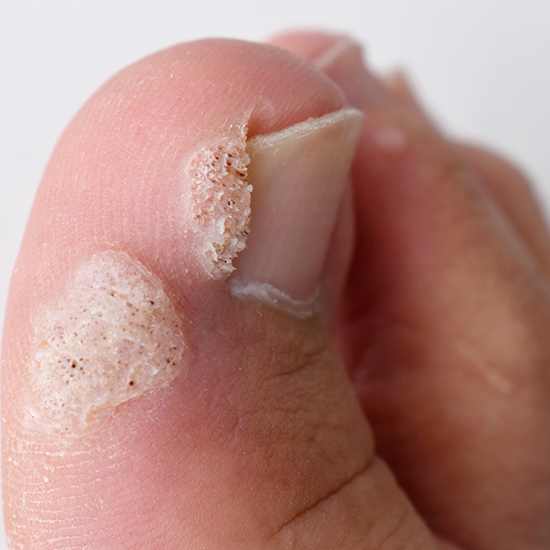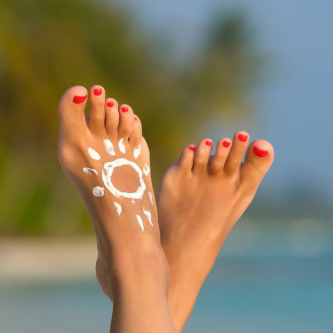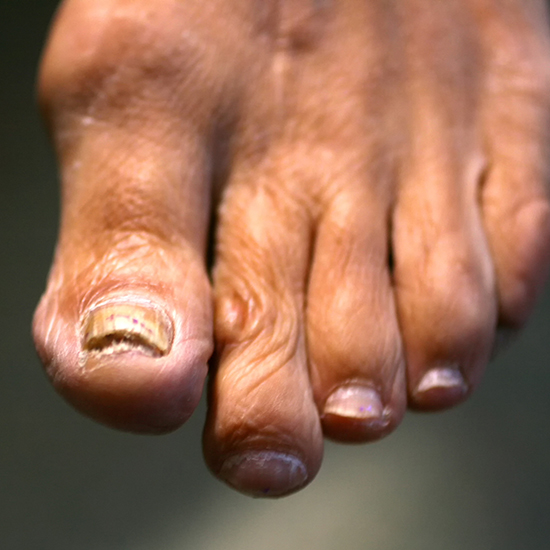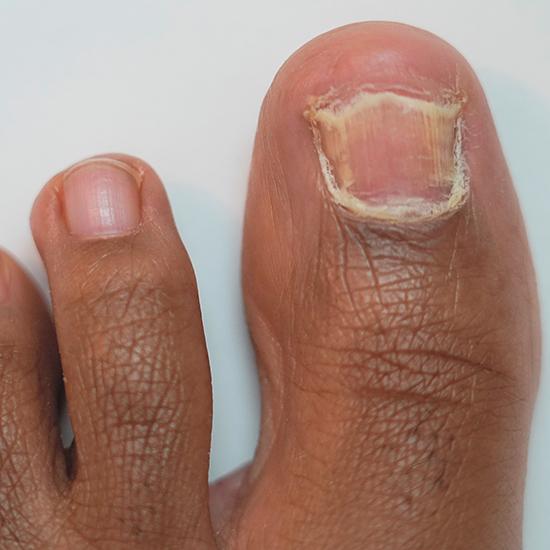Nail and Skin Conditions
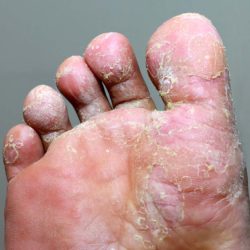
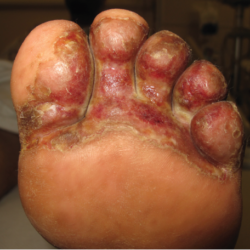
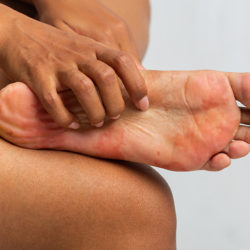
ATHLETE’S FOOT
Fungal infections are more common in warm weather when feet tend to sweat more. Fungus thrives in damp areas, such as swimming pools, showers and locker rooms. Athletes often have sweaty feet and use the facilities where fungus is commonly found, thus the term “athlete’s foot.”
Athlete’s foot usually produces itchy, dry, scaling skin. It is commonly seen on the soles of the feet and in between the toes. In advanced cases, inflammation, cracks and blisters may form; an infection caused by bacteria can also result. The fungus can spread to other areas of the body, including toenails.
Avoiding walking barefoot combined with good foot hygiene can help reduce the spread of the fungus. Feet should be washed every day with soap and water and thoroughly dried, including between the toes. Feet should be kept as dry as possible. If your feet sweat a lot you may need to change your socks during the day. Antifungal powders, sprays and/or creams are often used to treat athlete’s foot. Your foot and ankle surgeon will recommend the best treatment for you.
DISCLAIMER: MATERIAL ON THIS SITE IS BEING PROVIDED FOR EDUCATIONAL AND INFORMATION PURPOSES AND IS NOT MEANT TO REPLACE THE DIAGNOSIS OR CARE PROVIDED BY YOUR OWN MEDICAL PROFESSIONAL.
This information should not be used for diagnosing or treating a health problem or disease or prescribing any medication. Visit a health care professional to proceed with any treatment for a health problem.
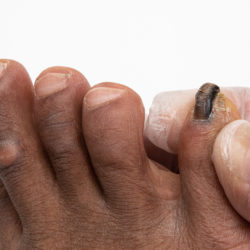
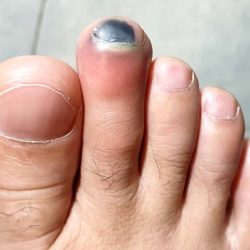
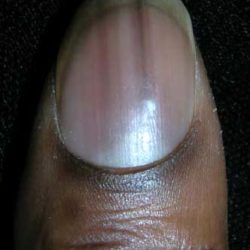
BLACK TOENAILS
A black, purple or brownish discoloration under or involving a toenail is frequently due to trauma to the toenail, such as when something is dropped on the toe. The color results from a blood clot or bleeding under the nail and may involve the entire nail or just a small portion of it. This can be very painful when the entire nail is involved and may need medical attention to relieve the pressure caused by bleeding under the toenail.
When the second or third toenails are involved, it is commonly referred to as “runner’s toe.” This can be the result of the nail being slightly too long and the shoe being either too big or too tight. If the shoe is too big, when running down hill, the foot slips and the nail can get caught where the toe cap meets the toebox. If the shoes are too tight, the nail can get pinched and jammed, resulting in bleeding between the nail plate and nail bed.
In almost 50% of African Americans the black discoloration that is noted on the toenail (and fingernail) is because melanocytes makes excess pigments that gets deposited on the nail bed.
Although it is very rare, a more serious cause of black toenails is malignant melanoma. Since early diagnosis and treatment of melanoma improves the chances for a good outcome, it is important that all black toenails be evaluated by a qualified podiatric provider to rule out this cause.
Other rare causes of black toenails include chemotherapy, fungal infections, chronic ingrown nails or health problems affecting the rest of the body.
DISCLAIMER: MATERIAL ON THIS SITE IS BEING PROVIDED FOR EDUCATIONAL AND INFORMATION PURPOSES AND IS NOT MEANT TO REPLACE THE DIAGNOSIS OR CARE PROVIDED BY YOUR OWN MEDICAL PROFESSIONAL.
This information should not be used for diagnosing or treating a health problem or disease or prescribing any medication. Visit a health care professional to proceed with any treatment for a health problem.
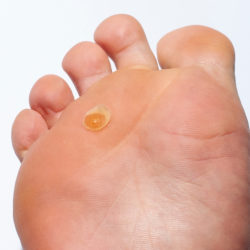
CALLUS
There are a number of treatments for painful calluses. People who have calluses are cautioned against performing “bathroom surgery,” as this can lead to cuts and infection. A foot and ankle surgeon can evaluate the cause of the calluses and recommend the treatment most appropriate for your condition. However, if the underlying cause of the callus is not treated or removed, the callus may return.
DISCLAIMER: MATERIAL ON THIS SITE IS BEING PROVIDED FOR EDUCATIONAL AND INFORMATION PURPOSES AND IS NOT MEANT TO REPLACE THE DIAGNOSIS OR CARE PROVIDED BY YOUR OWN MEDICAL PROFESSIONAL.
This information should not be used for diagnosing or treating a health problem or disease or prescribing any medication. Visit a health care professional to proceed with any treatment for a health problem.
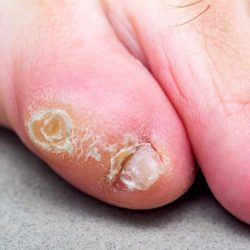
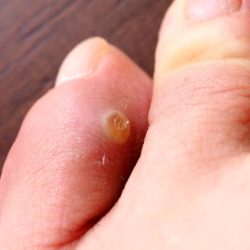
CORNS
People with foot deformities, such as hammertoes, often suffer from corns because the tops of the bent toes rub against the tops of shoes.
There are a number of treatment options for corns. When corns get hard enough to cause pain, a foot and ankle surgeon will recommend the treatment option most appropriate for you. However, if the underlying cause of the corn is not treated or removed, the corn may return. It is important to avoid trying to remove a corn at home or using medicated corn pads, as serious infection may occur.
DISCLAIMER: MATERIAL ON THIS SITE IS BEING PROVIDED FOR EDUCATIONAL AND INFORMATION PURPOSES AND IS NOT MEANT TO REPLACE THE DIAGNOSIS OR CARE PROVIDED BY YOUR OWN MEDICAL PROFESSIONAL.
This information should not be used for diagnosing or treating a health problem or disease or prescribing any medication. Visit a health care professional to proceed with any treatment for a health problem.
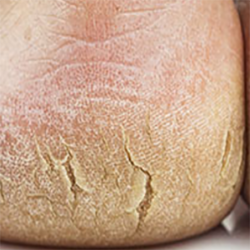
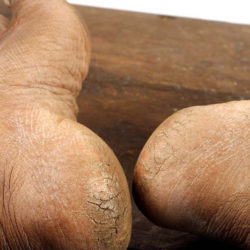
CRACKED HEELS
There are many potential causes of cracked heels. Dry skin (xerosis) is common and can get worse with wearing open-back shoes, increased weight or increased friction from the back of shoes. Dry, cracked skin can also be a subtle sign of more significant problems, such as diabetes or loss of nerve function (autonomic neuropathy).
Heels should be kept well moisturized with a cream to help reduce the cracking. If an open sore is noted, make an appointment with a foot and ankle surgeon for evaluation and treatment.
DISCLAIMER: MATERIAL ON THIS SITE IS BEING PROVIDED FOR EDUCATIONAL AND INFORMATION PURPOSES AND IS NOT MEANT TO REPLACE THE DIAGNOSIS OR CARE PROVIDED BY YOUR OWN MEDICAL PROFESSIONAL.
This information should not be used for diagnosing or treating a health problem or disease or prescribing any medication. Visit a health care professional to proceed with any treatment for a health problem.
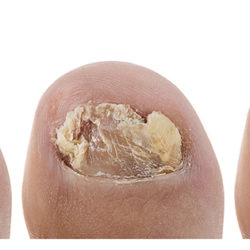
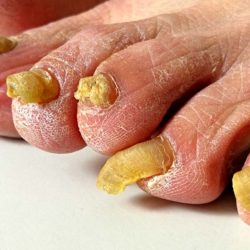
FUNGAL TOENAILS
A fungus is an organism that lives in warm moist areas. Fungus of the toenails is a common problem that can affect people of all ages, although it most commonly affects individuals who are older.
Toenail fungus often begins as an infection in the skin called tinea pedis (also known as athlete’s foot). The fungus often starts under the nail fold at the end of the nail. Over time, it grows underneath the nail and causes changes to its appearance, such as a yellow or brownish discoloration. It can also cause thickening and deformity of the toenail.
Many people have difficulty with their toenails and need assistance in caring for them. A foot and ankle surgeon can diagnose the cause of toenail problems and can recommend treatments.
DISCLAIMER: MATERIAL ON THIS SITE IS BEING PROVIDED FOR EDUCATIONAL AND INFORMATION PURPOSES AND IS NOT MEANT TO REPLACE THE DIAGNOSIS OR CARE PROVIDED BY YOUR OWN MEDICAL PROFESSIONAL.
This information should not be used for diagnosing or treating a health problem or disease or prescribing any medication. Visit a health care professional to proceed with any treatment for a health problem.

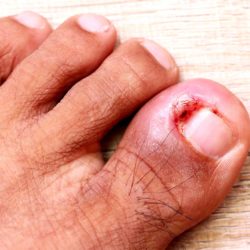
INGROWN TOENAILS
When a toenail is ingrown, it is curved and grows into the skin, usually at the nail borders (the sides of the nail). This digging in of the nail irritates the skin, often creating pain, redness, swelling and warmth in the toe.If an ingrown nail causes a break in the skin, bacteria may enter and cause an infection in the area, which is often marked by drainage and a foul odor. However, even if the toe is not painful, red, swollen or warm, a nail that curves downward into the skin can progress to an infection.
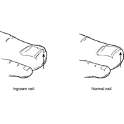

Causes
Causes of ingrown toenails include:
- Heredity. In many people, the tendency for ingrown toenails is inherited.
- Trauma. Sometimes an ingrown toenail is the result of trauma, such as stubbing your toe, having an object fall on your toe or engaging in activities that involve repeated pressure on the toes, such as kicking or running.
- Improper trimming. The most common cause of ingrown toenails is cutting your nails too short. This encourages the skin next to the nail to fold over the nail.
- Improperly sized footwear. Ingrown toenails can result from wearing socks and shoes that are tight or short.
- Nail conditions. Ingrown toenails can be caused by nail problems, such as fungal infections or losing a nail due to trauma.
Treatment
Sometimes initial treatment for ingrown toenails can be safely performed at home. However, home treatment is strongly discouraged if an infection is suspected or for those who have medical conditions that put feet at high risk, such as diabetes, nerve damage in the foot or poor circulation.

Home Care
If you do not have an infection or any of the above medical conditions, you can soak your foot in room-temperature water (adding Epsom salt may be recommended by your doctor) and gently massage the side of the nail fold to help reduce the inflammation.
Avoid attempting “bathroom surgery.” Repeated cutting of the nail can cause the condition to worsen over time. If your symptoms fail to improve, it is time to see a foot and ankle surgeon.
Physician Care
After examining the toe, the foot and ankle surgeon will select the treatment best suited for you. If an infection is present, an oral antibiotic may be prescribed.
Sometimes a minor surgical procedure, often performed in the office, will ease the pain and remove the offending nail. After applying a local anesthetic, the doctor removes part of the nail’s side border. Some nails may become ingrown again, requiring removal of the nail root.
Following the nail procedure, a light bandage will be applied. Most people experience very little pain after surgery and may resume normal activity the next day. If your surgeon has prescribed an oral antibiotic, be sure to take all the medication, even if your symptoms have improved.
Preventing Ingrown Toenails
Many cases of ingrown toenails may be prevented by:
- Proper trimming. Cut toenails in a fairly straight line, and do not cut them too short. You should be able to get your fingernail under the sides and end of the nail.
- Well-fitting shoes and socks. Do not wear shoes that are short or tight in the toe area. Avoid shoes that are loose because they too cause pressure on the toes, especially when running or walking briskly.
What You Should Know About Home Treatment
- Do not cut a notch in the nail. Contrary to what some people believe, this does not reduce the tendency for the nail to curve downward.
- Do not repeatedly trim nail borders. Repeated trimming does not change the way the nail grows and can make the condition worse.
- Do not place cotton under the nail. Not only does this not relieve the pain, it provides a place for harmful bacteria to grow, resulting in infection.
- Over-the-counter medications are ineffective. Topical medications may mask the pain, but they do not correct the underlying problem.
DISCLAIMER: MATERIAL ON THIS SITE IS BEING PROVIDED FOR EDUCATIONAL AND INFORMATION PURPOSES AND IS NOT MEANT TO REPLACE THE DIAGNOSIS OR CARE PROVIDED BY YOUR OWN MEDICAL PROFESSIONAL.
This information should not be used for diagnosing or treating a health problem or disease or prescribing any medication. Visit a health care professional to proceed with any treatment for a health problem.
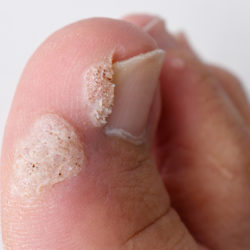
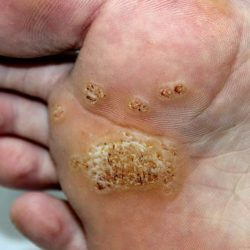
PLANTAR WART
A wart is a small growth on the skin that develops when the skin is infected by a virus. Warts can develop anywhere on the foot, but they typically appear on the bottom (plantar side) of the foot. Plantar warts most commonly occur in children, adolescents and the elderly.
There are two types of plantar warts:
- A solitary wart is a single wart. It often increases in size and may eventually multiply, forming additional satellite warts.
- Mosaic warts are a cluster of several small warts growing closely together in one area. Mosaic warts are more difficult to treat than solitary warts.
Causes
Plantar warts are caused by direct contact with the human papilloma virus (HPV). This is the same virus that causes warts on other areas of the body.
Symptoms
The symptoms of a plantar wart may include:
- Thickened skin. A plantar wart often resembles a callus because of its tough, thick tissue.
- Pain. Walking and standing may be painful. Squeezing the sides of the wart may also cause pain.
- Tiny black dots. These often appear on the surface of the wart. The dots are actually dried blood contained in the capillaries (tiny blood vessels). Plantar warts grow deep into the skin. Usually, this growth occurs slowly with the wart starting small and becoming larger over time.
Diagnosis & Treatment
To diagnose a plantar wart, the foot and ankle surgeon will examine the patient’s foot and look for signs and symptoms of a wart.
Although plantar warts may eventually clear up on their own, most patients desire faster relief. The goal of treatment is to completely remove the wart.
The foot and ankle surgeon may use topical or oral treatments, laser therapy, cryotherapy (freezing), acid treatments or surgery to remove the wart.
Regardless of the treatment approaches undertaken, it is important that the patient follow the surgeon’s instructions, including all home care and medication that has been prescribed, as well as follow-up visits with the surgeon. Warts may return, requiring further treatment.
If there is no response to treatment, further diagnostic evaluation may be necessary. In such cases, the surgeon can perform a biopsy to rule out other potential causes for the growth.
Although many folk remedies for warts exist, patients should be aware that these remain unproven and may be dangerous. Patients should never try to remove warts themselves. This can do more harm than good.
DISCLAIMER: MATERIAL ON THIS SITE IS BEING PROVIDED FOR EDUCATIONAL AND INFORMATION PURPOSES AND IS NOT MEANT TO REPLACE THE DIAGNOSIS OR CARE PROVIDED BY YOUR OWN MEDICAL PROFESSIONAL.
This information should not be used for diagnosing or treating a health problem or disease or prescribing any medication. Visit a health care professional to proceed with any treatment for a health problem.
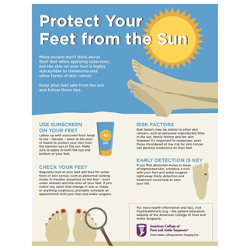
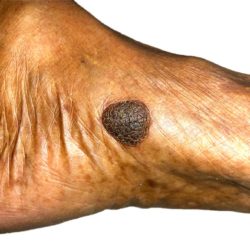
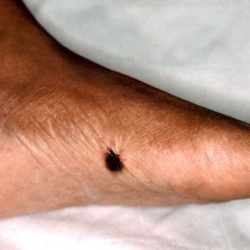
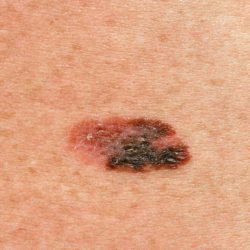
SKIN CANCER
DISCLAIMER: MATERIAL ON THIS SITE IS BEING PROVIDED FOR EDUCATIONAL AND INFORMATION PURPOSES AND IS NOT MEANT TO REPLACE THE DIAGNOSIS OR CARE PROVIDED BY YOUR OWN MEDICAL PROFESSIONAL.
This information should not be used for diagnosing or treating a health problem or disease or prescribing any medication. Visit a health care professional to proceed with any treatment for a health problem.
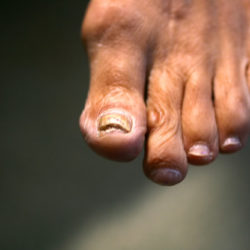
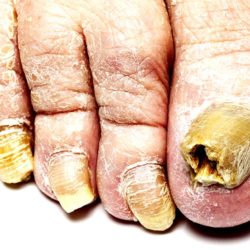
THICK TOENAILS
Toenails will often become thick as an individual grows older. Thickening may also occur as a result of trauma to the toenail, such as when it repeatedly hits the end of a shoe that is too short. Sometimes when something is dropped on the toenail, the nail will fall off. When a new toenail grows back, it will often be thicker than it was previously.
Thick toenails can also be seen in individuals with nail fungus (onychomycosis), psoriasis and hypothyroidism. Those who have problems with the thickness of their toenails should consult a podiatry provider for proper diagnosis and treatment.
DISCLAIMER: MATERIAL ON THIS SITE IS BEING PROVIDED FOR EDUCATIONAL AND INFORMATION PURPOSES AND IS NOT MEANT TO REPLACE THE DIAGNOSIS OR CARE PROVIDED BY YOUR OWN MEDICAL PROFESSIONAL.
This information should not be used for diagnosing or treating a health problem or disease or prescribing any medication. Visit a health care professional to proceed with any treatment for a health problem.

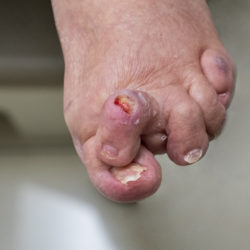
ULCERS
Ulcers, are open sores in the skin. They occur when the outer layers of the skin are injured and the deeper tissues become exposed. They can be caused by excess pressure due to ill-fitting shoes, long periods in bed or after an injury that breaks the skin. Ulcers are commonly seen in patients living with limited mobility, diabetes, neuropathy or vascular disease. Open wounds can put patients at increased risk of developing infection in the skin and bone.
The signs and symptoms of ulcers may include drainage, odor or red, inflamed, thickened tissue. Pain may or may not be present.
Diagnosis may include x-rays to evaluate possible bone involvement. Other advanced imaging studies may also be ordered to evaluate for vascular disease, which may affect a patient’s ability to heal the wound.
Ulcers are treated by removing the unhealthy tissue and performing local wound care to assist in healing. Special shoes or padding may be used to remove excess pressure on the area. If infection is present, antibiotics will be necessary. In severe cases that involve extensive infection or are slow to heal, surgery or other advanced wound care treatments may be necessary.
DISCLAIMER: MATERIAL ON THIS SITE IS BEING PROVIDED FOR EDUCATIONAL AND INFORMATION PURPOSES AND IS NOT MEANT TO REPLACE THE DIAGNOSIS OR CARE PROVIDED BY YOUR OWN MEDICAL PROFESSIONAL.
This information should not be used for diagnosing or treating a health problem or disease or prescribing any medication. Visit a health care professional to proceed with any treatment for a health problem.
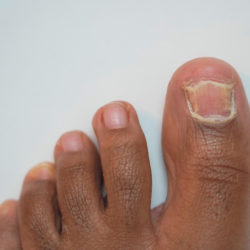
WHITE AND YELLOW TOENAILS
 White toenails:
White toenails:
White lines may also occur due to a medical illness or trauma that has occurred elsewhere in the body, causing protein to be deposited within the nail bed.A fungal infection that affects the outermost layer of the toenail may cause a bright white discoloration of the toenail.A white area close to the nail fold (the lunula) varies in size from one person to another. This is a normal aspect of the nail.
It is recommended that you see a podiatry provider for the diagnosis and possible treatment of white toenails.
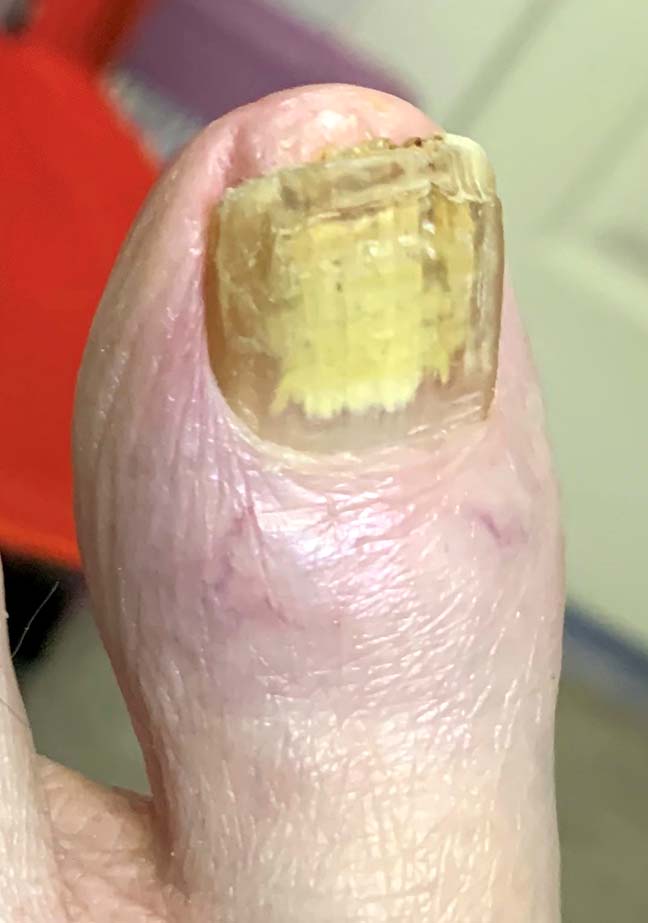
Yellow Toenails:
The most common cause of yellow discoloration in the toenails is a fungal infection. The fungus often develops underneath the nail, resulting in it becoming thick, raised and yellow in color.
Other potential causes for yellow discoloration of the nail include diabetes mellitus and lymphedema (chronic leg swelling). Yellow staining of the nails can also occur in individuals who use nail polish. A stained nail may take several months to grow out.
DISCLAIMER: MATERIAL ON THIS SITE IS BEING PROVIDED FOR EDUCATIONAL AND INFORMATION PURPOSES AND IS NOT MEANT TO REPLACE THE DIAGNOSIS OR CARE PROVIDED BY YOUR OWN MEDICAL PROFESSIONAL.
This information should not be used for diagnosing or treating a health problem or disease or prescribing any medication. Visit a health care professional to proceed with any treatment for a health problem.


